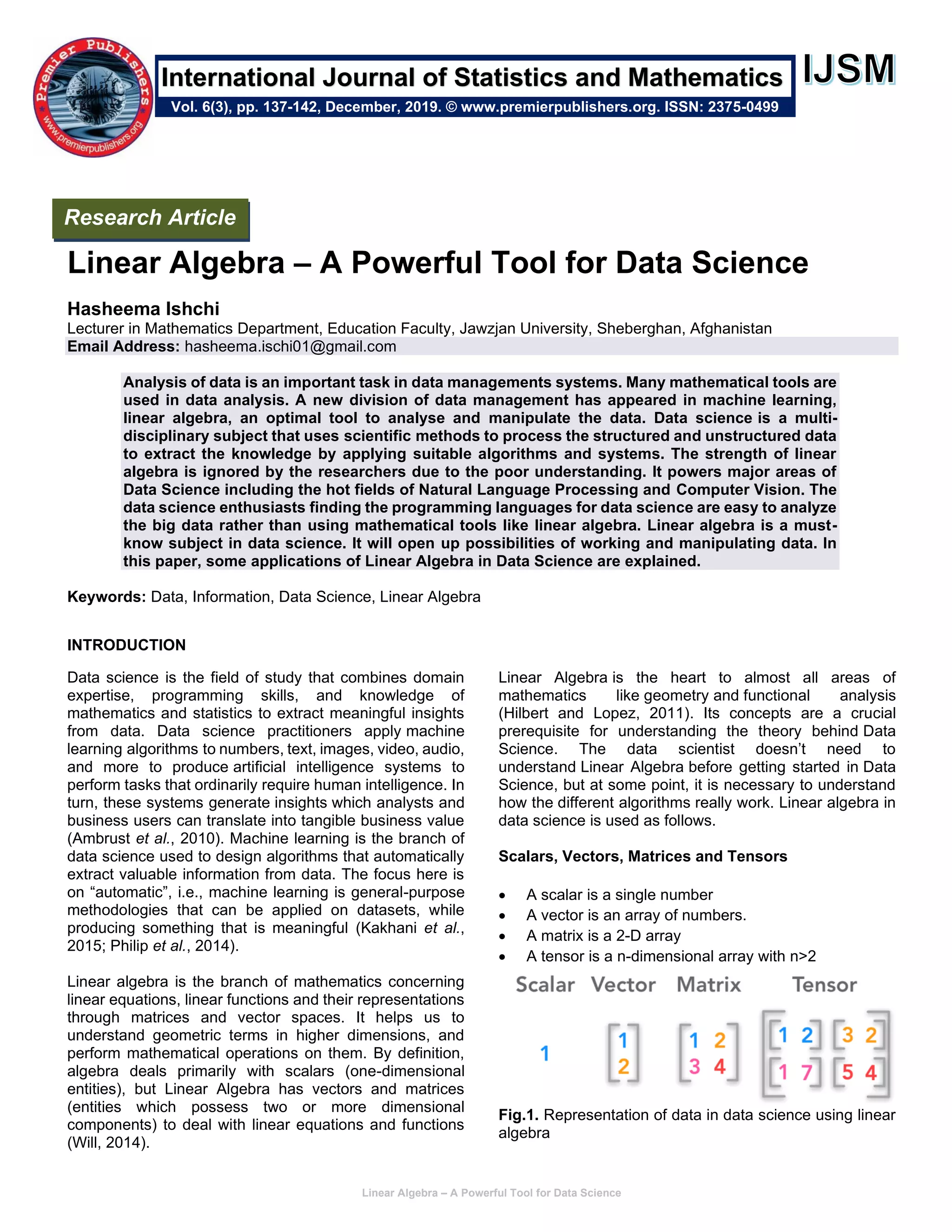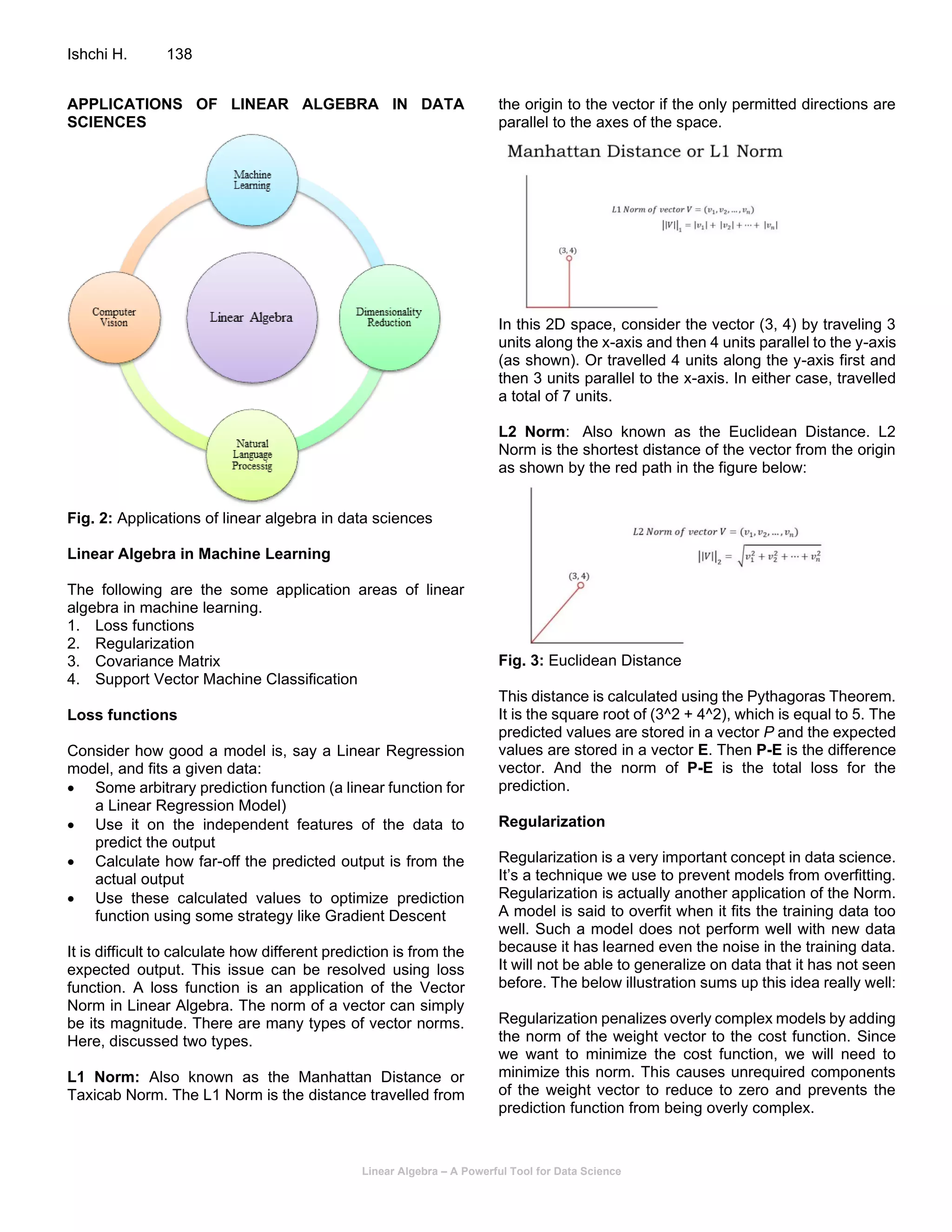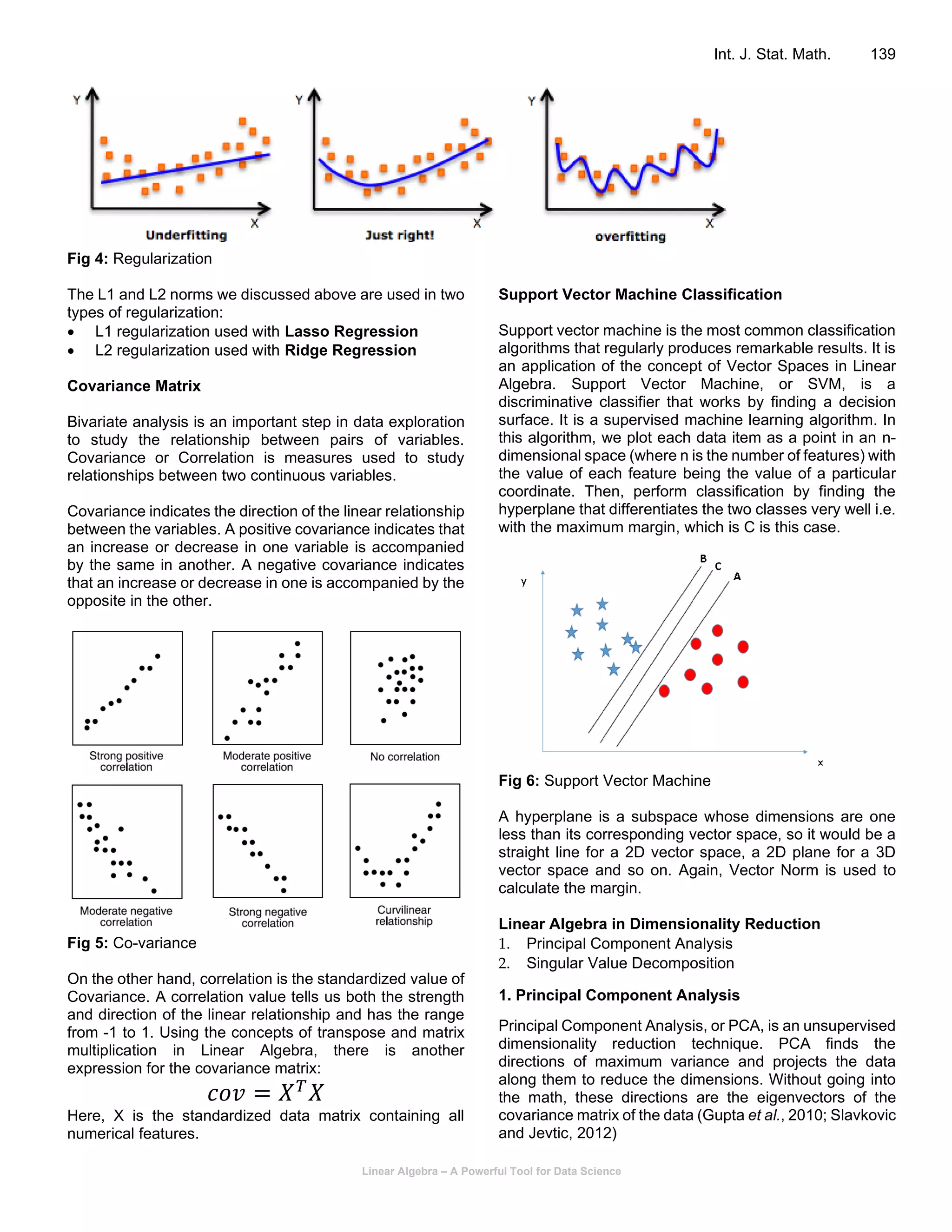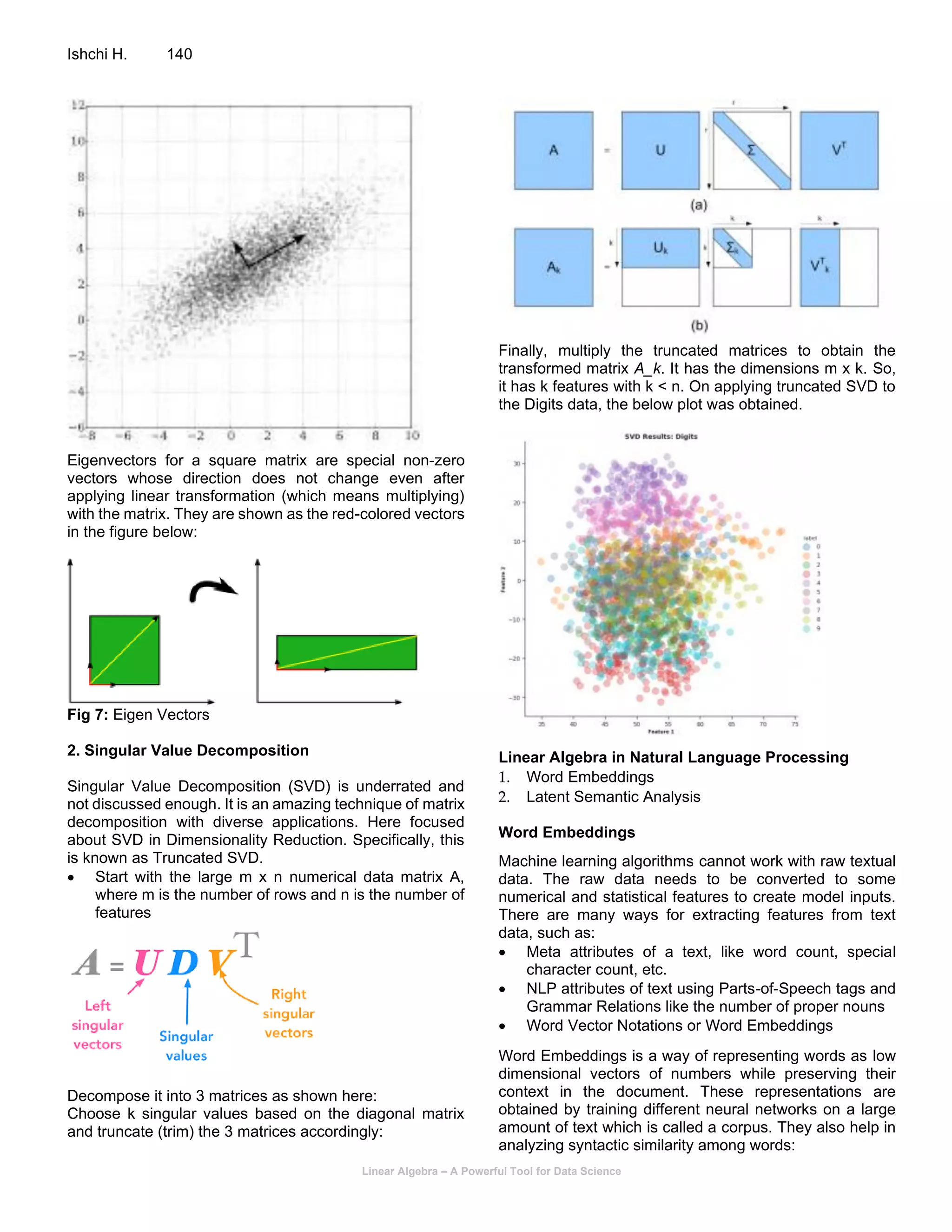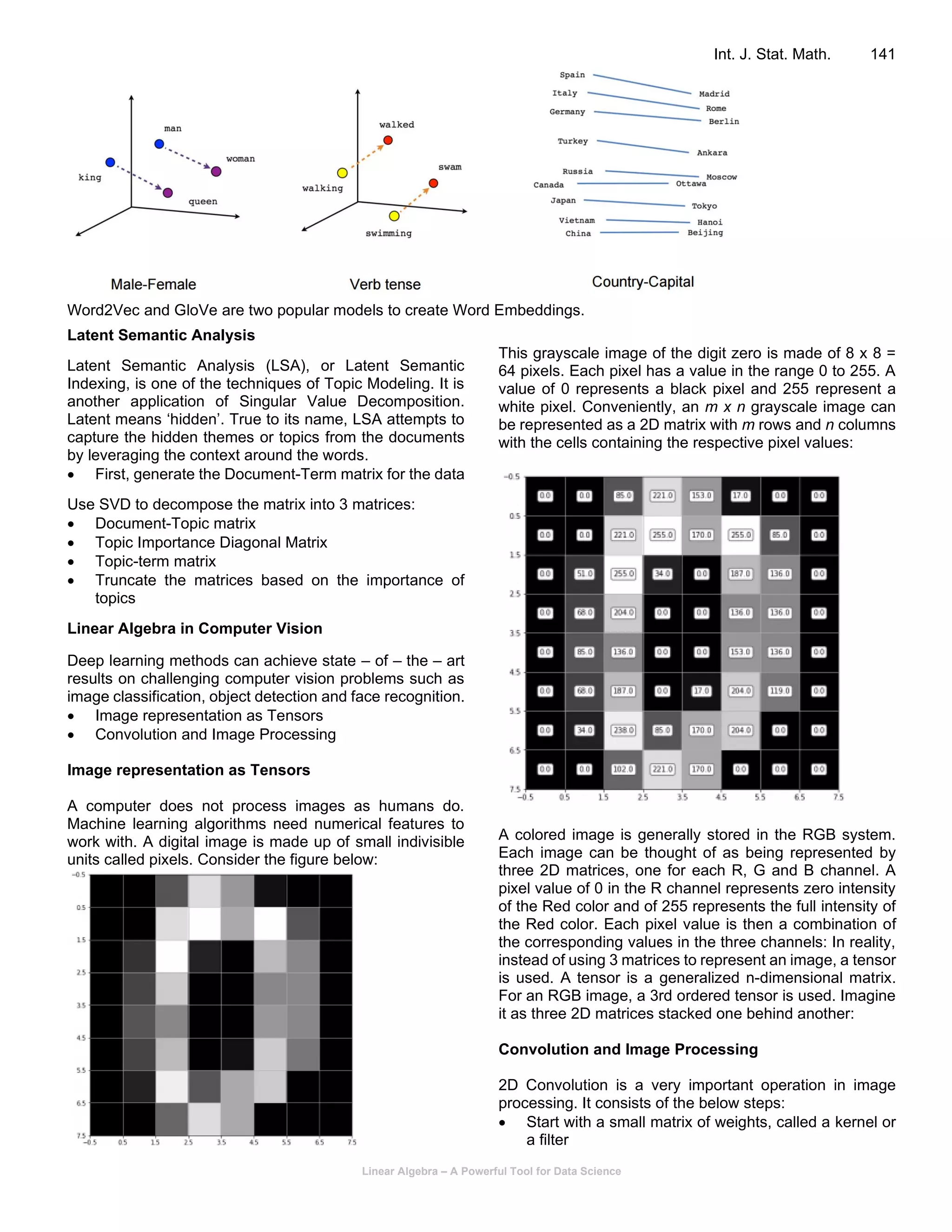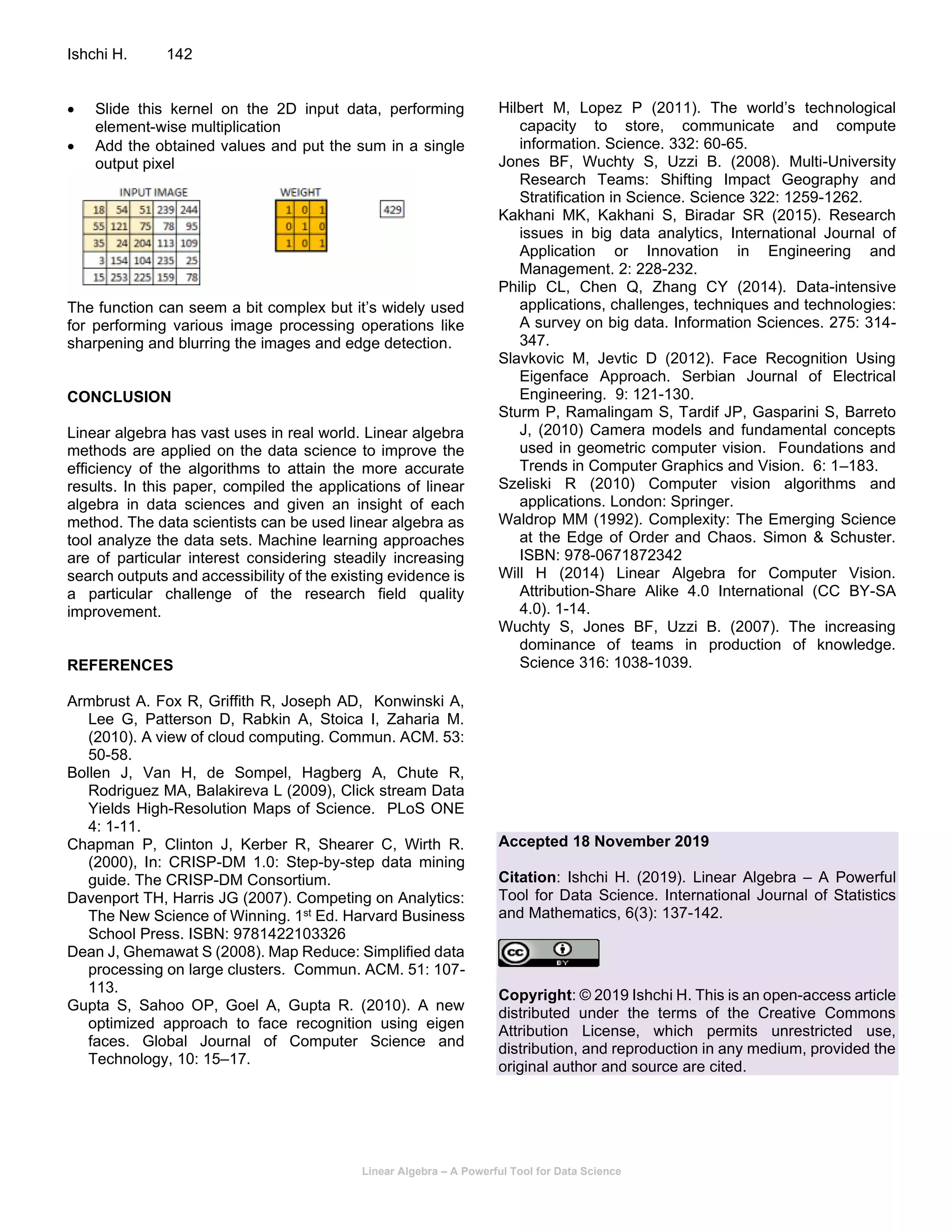This document discusses the importance of linear algebra in data science, highlighting its role in machine learning, dimensionality reduction, and natural language processing. It outlines crucial applications such as loss functions, regularization, covariance matrices, and support vector machines, and emphasizes the necessity for data scientists to understand linear algebra concepts for data manipulation and analysis. The paper concludes that linear algebra significantly enhances algorithm efficiency and accuracy in data science.
